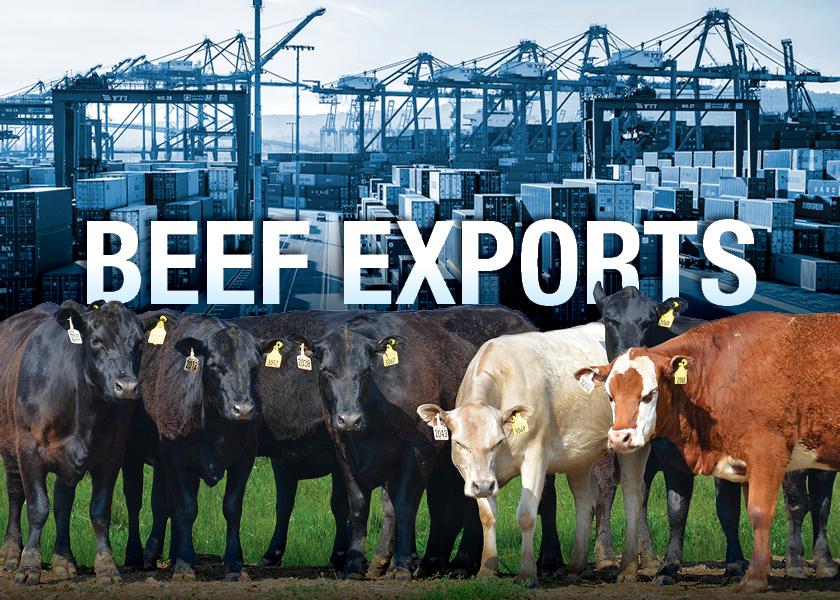Beef Exports’ Critical Role for Producers, Processors

Averaging more than $1 billion per month through September, U.S. beef exports are on pace for a record year, a fact that plays a critical role in the value of cattle for American ranchers.
“Global beef demand is at the highest level on record in 2022,” CattleFax CEO Randy Blach told attendees at the U.S. Meat Export Federation Strategic Planning Conference in Oklahoma City. “Beef demand in total in the U.S. was down a little compared to 2020 and 2021, so it shows how important these export markets have been (for U.S. producers).”
While September’s data showed some headwinds for beef – down 7% in both volume and value – during the first nine months of 2022 beef exports were still 4% above last year at 1.12 million metric tons. Export value reached $9.12 billion, up 20% and already achieving the second highest total for any calendar year, trailing only the 2021 record ($10.58 billion).
The trend is valuable for both producers and beef processors that export beef, says Jay Krehbiel, senior VP of International Sales for Tyson Fresh Meats.
“Exports are extremely beneficial to the entire U.S. beef industry – back to the cattle producer, to the cow-calf producer and to the cattle feeder,” Krehbiel said. “We’ve seen global demand for beef increased significantly over the last several years and particularly the last couple of years. That’s very meaningful to us, too.”
In terms of value to U.S. producers, Blach says for every pound of beef the U.S. exports “we generate about 60 cents a pound more on what we export versus what we import. You bring that all back to a value proposition to the U.S. industry and export values are nearly $500 per head this for 2022.”
Strong global demand for U.S. beef is largely due to the higher quality of the U.S. products produced with the efficiency of America’s corn and soybean producers.
“The U.S. is the largest high-quality meat producer on the planet,” Blach said. “We produce the most beef, the most broiler meat and the third-largest amount of pork in the world.”
Tyson has seen a significant increase in quality grades over the last several years which has benefitted the company’s export sales.
“That is what our (export) customers are demanding right now – high quality beef from the U.S.,” Krehbiel said. “Global customers are getting a taste of that and they are particularly fond of the Prime grades and Choice grades. They’re demanding more of that from us.”
Krehbiel said over the past five years U.S.-based retailers are expanding abroad, particularly in Asia.
“Those retailers that are expanding globally want to have a footprint similar to their stores in the U.S., and that means having high-quality U.S. beef in their meat case,” he said. “And I can’t stress enough how important a role the U.S. Meat Export Federation has played in educating consumers overseas to the value of U.S. beef and pork.”
Global demand for red meat and poultry has grown in recent years as disposable income has grown in many emerging markets. Krehbiel says the U.S. beef industry is “uniquely positioned to take advantage of that growth.”
Recent economic headwinds, however, suggest a moderate slowdown in the export market going forward.
“We have to expect that we’re going to see a moderation in tonnage,” Blach says. “We estimate we’ll see a 2% to 3% decline in export activity in 2023 and probably a moderation yet again in 2024.”
Yet, Blach is confident that U.S. beef will continue to find strong global demand “because there’s so many customers around the world that have gained a taste for that high-quality fed beef that we produce here in the U.S., and as a reminder, the U.S. produces 70% to 75% of all that high-quality beef in the global marketplace.”
Continuing focus on the production of high-quality beef, Blach and Krehbiel agree, is what U.S. beef consumers want and will provide a brighter future for U.S. producers.







